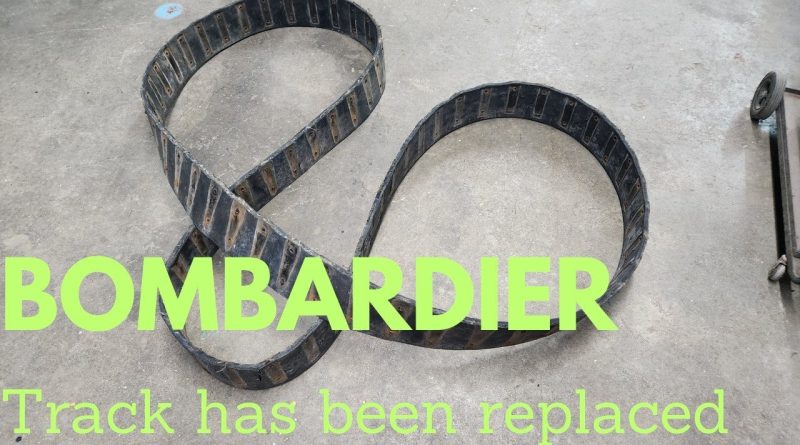HOW TO INSTALL A TRACK BELT | BOMBARDIER
Welcome to our channel! Be sure to support us by giving this video a thumbs up, subscribing to our channel, and hitting the notification bell so you never miss any of our thrilling content!
In today’s episode, Dad and I tackle the last few final hours of the big push to get the new track belt on to the track belt on the passenger side of the customer’s Wide Gauge Bombardier. A new customer arrived and Dad and I spent the day cleaning up before they arrived. While Dad was bust visiting it removed the last of the track bolts and backing plates and put the old belt into storage for the customer.
Join us in this video where we explore the incredible history of Bombardier, the legendary Canadian company known for its groundbreaking innovations in transportation. With over six decades of experience, Bombardier’s legacy is a testament to their expertise in crafting snow vehicles, particularly snow buses designed for extreme weather conditions. Discover the pioneering spirit of Armand Bombardier from Valcourt, Quebec, who introduced a revolutionary design that laid the foundation for mechanized snow travel. His B-7, an enclosed wooden vehicle with tracks at the rear and skis at the front, transformed snow transport and made its debut in 1937. During the war years, Bombardier played a crucial role in supporting the war effort, culminating in the production of the B-12 model in 1942. The B-12, built from metal, retained the iconic design of the B-7 and even spawned larger 18-passenger B-18 variants. Painted primarily in a school bus-like yellow shade, this choice was made for visibility in challenging conditions.
Originally designed to transport people in remote locations, such as logging camps, mining sites, and northern regions, Bombardier snow buses served diverse purposes, including ambulance duty, school transportation, mail delivery, and taxi services. Their ruggedness and ability to navigate tough terrains, including deep snow and ice, made them indispensable.
As time progressed, Bombardier’s commitment to innovation led to the introduction of the B12 snow bus in the 1960s, designed specifically for passenger transport. With a capacity for 12 passengers, a robust diesel engine, heating systems, and a comfortable interior, this marked a significant evolution. We delve into the mechanics of operating a Bombardier snow bus, illustrating how it functions similarly to regular buses, with a driver in the front cab using a steering wheel, accelerator, and brake pedals for control. The track system, featuring rubber tracks on the wheels, provides stability and traction in snowy and icy conditions, ensuring safe navigation.
Inside the Bombardier snow bus, passengers enjoy maximum comfort with heating and ventilation systems that maintain a pleasant temperature, even in extreme weather. The spacious seating and large windows offer panoramic views of the surrounding landscape.
Join us as we embark on the intricate process of repairing a Bombardier snow bus, a task that demands specialized knowledge and tools. These unique vehicles have a rich history of providing safe and reliable transportation in extreme weather conditions. While their operation is similar to conventional buses, their specialized track system allows them to navigate challenging terrain safely. Repairing a snow bus is a complex endeavor, requiring specialized skills and tools. Don’t miss this exciting journey into the world of Bombardier snow buses! #bombardier #restoration #classiccars
how to repair windows 7




Mostly dad yelling at me classic lol good job guys 🫡